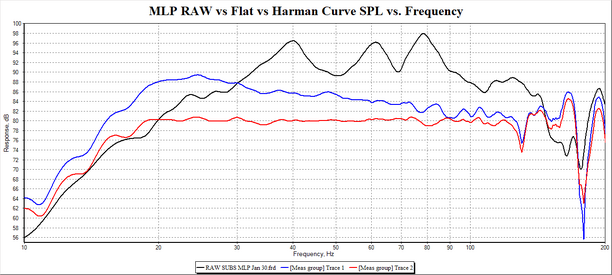I have also been thinking about this topic a lot recently and here are some musings that I have come up with:
Double blind wine tasting? Coke vs Pepsi and functional MRIs? Very interesting topics to read about that highlight the complexities of human perceptions and all the factors that influence it.
I have read a lot of behavioral economics and psychology books (probably the best being any of the books by Dan Ariely or Daniel Kahneman) and think the audiophile community is a prime example of various psychological quirks such as (I am sure I will get some of the exact terminology wrong):
Bandwagon Effect: A person is more likely to go along with a belief if there are many others who hold that belief.
Related to audio – Review for this speaker are amazing thus it must be amazing.
Choice-supportive Bias: Once a decision is made, people tend to over-focus on its benefits and minimize its flaws.
Related to audio – I have spent my life loving tube amps and vinyl, thus it must be best.
Confirmation Bias: Paying more attention to information that reinforces previously held beliefs and ignoring evidence to the contrary.
Related to audio - I only agree with those who believe in listening with their ears (or those who only use measurements)
Ostrich Effect: Avoiding bad news about a decision by ignoring data that might be negative.
Related to audio - I paid an arm and a leg for this amp, and now you say it measures similar to a much cheaper amp!?!
Belief bias: An effect where someone's evaluation of the logical strength of an argument is biased by the believability of the conclusion
Related to audio - Wire can pick up RF interference, thus I probably should shield from it.
Experimenter's or expectation bias: The tendency for experimenters to believe, certify, and publish data that agree with their expectations for the outcome of an experiment, and to disbelieve, discard, or downgrade the corresponding weightings for data that appear to conflict with those expectations
Related to audio - Absorb the first reflections!
Dunning–Kruger effect: The tendency for unskilled individuals to overestimate their own ability and the tendency for experts to underestimate their own ability.
Related to audio - I can hear a difference between these two components as I have been an audiophile for years!
Ikea effect: The tendency for people to place a disproportionately high value on objects that they partially assembled themselves, such as furniture from IKEA, regardless of the quality of the end product
Related to audio - I worked hard setting all this stuff up and doing this new tweak, and boy what a difference!
Etc…
There are many psychological quirks that are very applicable to everyday life and specifically audio that I think we all could learn from.
It is easy to see how many people fall into these traps when it comes to audio. We often think that we personally do not fall into any of these biases, but we do. Thus I think we need to learn to live with them. We can use these biases and quirks to our advantage such as: If you want to impress your friends (or even prime yourself) then maybe larger and more pretty speakers might truly be worth it. If you tinker and change the position of the speakers, you might get the ikea effect and it might sound better. If the album your listening to is well reviewed and has a great soundstage, you will be primed to hear that better. Etc.
I think many people need more respect for the scientific side of audio. We need scientific reviews/analysis/comparisons. We need double blind tests. We need to challenge all beliefs. We can quantify and find associations that hold scientific validity.
I think many people also need more respect for human side of audio. Large speakers truly look impressive. Cosmetics are important. Finding your preference is important. Buying new things is fun.
The joy of being an audiophile is walking this line and supporting both sides!
Double blind wine tasting? Coke vs Pepsi and functional MRIs? Very interesting topics to read about that highlight the complexities of human perceptions and all the factors that influence it.
I have read a lot of behavioral economics and psychology books (probably the best being any of the books by Dan Ariely or Daniel Kahneman) and think the audiophile community is a prime example of various psychological quirks such as (I am sure I will get some of the exact terminology wrong):
Bandwagon Effect: A person is more likely to go along with a belief if there are many others who hold that belief.
Related to audio – Review for this speaker are amazing thus it must be amazing.
Choice-supportive Bias: Once a decision is made, people tend to over-focus on its benefits and minimize its flaws.
Related to audio – I have spent my life loving tube amps and vinyl, thus it must be best.
Confirmation Bias: Paying more attention to information that reinforces previously held beliefs and ignoring evidence to the contrary.
Related to audio - I only agree with those who believe in listening with their ears (or those who only use measurements)
Ostrich Effect: Avoiding bad news about a decision by ignoring data that might be negative.
Related to audio - I paid an arm and a leg for this amp, and now you say it measures similar to a much cheaper amp!?!
Belief bias: An effect where someone's evaluation of the logical strength of an argument is biased by the believability of the conclusion
Related to audio - Wire can pick up RF interference, thus I probably should shield from it.
Experimenter's or expectation bias: The tendency for experimenters to believe, certify, and publish data that agree with their expectations for the outcome of an experiment, and to disbelieve, discard, or downgrade the corresponding weightings for data that appear to conflict with those expectations
Related to audio - Absorb the first reflections!
Dunning–Kruger effect: The tendency for unskilled individuals to overestimate their own ability and the tendency for experts to underestimate their own ability.
Related to audio - I can hear a difference between these two components as I have been an audiophile for years!
Ikea effect: The tendency for people to place a disproportionately high value on objects that they partially assembled themselves, such as furniture from IKEA, regardless of the quality of the end product
Related to audio - I worked hard setting all this stuff up and doing this new tweak, and boy what a difference!
Etc…
There are many psychological quirks that are very applicable to everyday life and specifically audio that I think we all could learn from.
It is easy to see how many people fall into these traps when it comes to audio. We often think that we personally do not fall into any of these biases, but we do. Thus I think we need to learn to live with them. We can use these biases and quirks to our advantage such as: If you want to impress your friends (or even prime yourself) then maybe larger and more pretty speakers might truly be worth it. If you tinker and change the position of the speakers, you might get the ikea effect and it might sound better. If the album your listening to is well reviewed and has a great soundstage, you will be primed to hear that better. Etc.
I think many people need more respect for the scientific side of audio. We need scientific reviews/analysis/comparisons. We need double blind tests. We need to challenge all beliefs. We can quantify and find associations that hold scientific validity.
I think many people also need more respect for human side of audio. Large speakers truly look impressive. Cosmetics are important. Finding your preference is important. Buying new things is fun.
The joy of being an audiophile is walking this line and supporting both sides!











